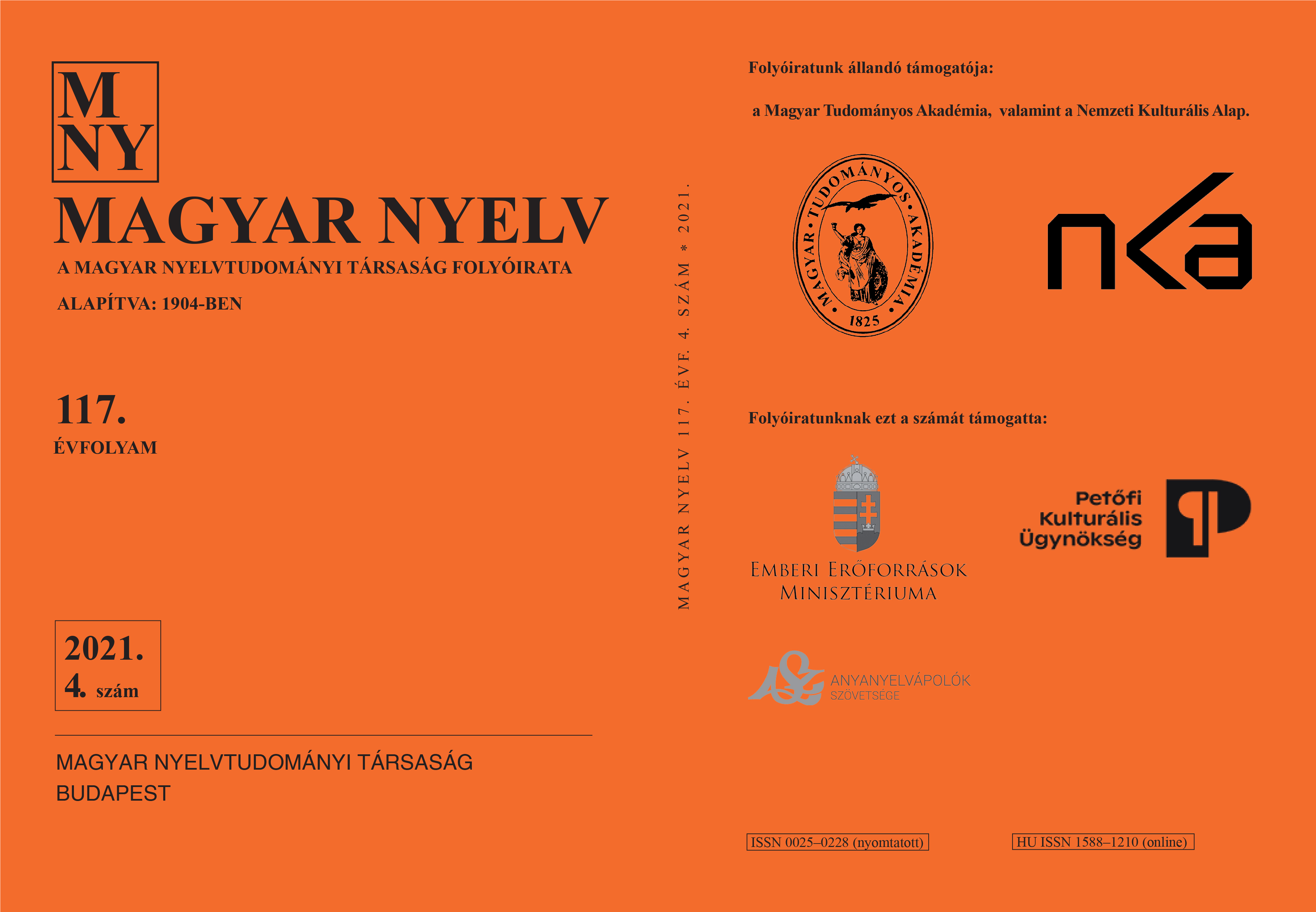The construal processes of the dialect speaker
A case study of discourses in the Talking Book of Hungarian Dialects in Slovakia
DOI:
https://doi.org/10.18349/MagyarNyelv.2021.4.485Keywords:
clause construction, conceptual elaboration, contextualization, dialectology, semantics, spontaneous discourse, subjectification, talking bookAbstract
The authors investigate certain semantic and pragmatic aspects of semi-spontaneous discourses (interviews) of minority Hungarian dialect speakers in Slovakia in a usage based cognitive grammar framework. Nine discourses from three dialectal regions are selected from the Talking Book of Hungarian Dialects in Slovakia, recorded in audio form and dialectal transcription. The four domains of the analysis are as follows: the features of dynamic clause construction (in three dimensions: the number and character of the components of the scene expressed by the clause, the type of the action completed by the clause, and the role of the contextualizers); the semantic construal of the central topic of the discourse; the degree of subjectification expressed by the speaker, and the relation of the speaker to the context (the interview situation). The results demonstrate that the speakers of the corpus use, in most cases, the baseline Hungarian sentence: the neutral positive affirmative clause only with a few necessary complements and modifiers, expressing everyday local events, states and situations in positive statements, referring to local social and spatio-temporal contextual elements. The central topics of the discourses are construed through the semantic and pragmatic use of frames and scenarios as Gestalts, with reference only to some characteristic elements. The speakers construe the events and situations with a high degree of objectification, although these parts are framed by subjectified perspectivizations, mainly by discourse markers. The speakers express their relation to the speech situation implicitly by discourse markers and metapragmatic expressions, in a low number. With respect to the features treated here, no significant differences can be found between the discourses from the three dialect regions, although these regions are widely different in other (e.g., phonological) aspects.
Downloads
Published
Issue
Section
License
Copyright (c) 2022 Magyar Nyelv

This work is licensed under a Creative Commons Attribution-NonCommercial-NoDerivatives 4.0 International License.
Magyar Nyelv is a Diamond Open Access periodical. Documents can be freely downloaded and duplicated in an electronic format, and can be used unchanged and with due reference to the original source. Such use must not serve commercial purposes. In the case of any form of dissemination and use, Hungarian Copyright Act LXXVI/1999 and related laws are to be observed. The electronic version of the journal is subject to the regulations of CC BY-NC-ND (Creative Commons – Attribution-NonCommercial-NoDerivatives).
The journal permits its authors, at no cost and without any temporal limitation, to make pre-print copies of their manuscripts publicly available via email or in their own homepage or that of their institution, or in either closed or free-for-all repositories of their institutions/universities, or other non-profit websites, in the form accepted by the journal editor for publication and even containing amendments on the basis of reviewers’ comments. When the authors publicize their papers in this manner, they have to warn their readers that the manuscript at hand is not the final published version of the work. Once the paper has been published in a printed or online form, the authors are allowed (and advised) to use that (post-print) version for the above purposes. In that case, they have to indicate the exact location and other data of the journal publication. The authors retain the copyright of their papers; however, in the case of an occasional secondary publication, the bibliographical data of the first publication have to be included.



